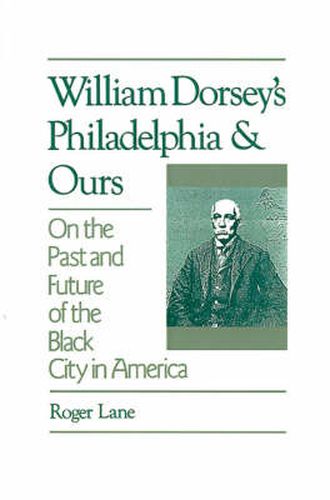Readings Newsletter
Become a Readings Member to make your shopping experience even easier.
Sign in or sign up for free!
You’re not far away from qualifying for FREE standard shipping within Australia
You’ve qualified for FREE standard shipping within Australia
The cart is loading…






Lane here illuminates the African-American experience through a close look at a single city, once the metropolitan headquarters of black America, now typical of many. He recognizes that urban history offers more clues, both to modern accomplishments and to modern problems, than the dead past of rural slavery. The book’s historical section is based on hundreds of newly discovered scrapbooks kept by William Henry Dorsey, Philadelphia’s first black historian. These provide an intimate and comprehensive view of the critical period between the Civil War and about 1900, when African-Americans, formally free and increasingly urban, made the biggest educational and occupational gains in history. Dorsey’s tens of thousands of newspaper clippings and other sources, detail records of high culture and low, success and scandal, personal and public life. In the final chapters Lane outlines the urban situation today, the strong parallels between past and present that suggest the power of continuity and the equally strong differences that point to the possibility of change.
$9.00 standard shipping within Australia
FREE standard shipping within Australia for orders over $100.00
Express & International shipping calculated at checkout
Lane here illuminates the African-American experience through a close look at a single city, once the metropolitan headquarters of black America, now typical of many. He recognizes that urban history offers more clues, both to modern accomplishments and to modern problems, than the dead past of rural slavery. The book’s historical section is based on hundreds of newly discovered scrapbooks kept by William Henry Dorsey, Philadelphia’s first black historian. These provide an intimate and comprehensive view of the critical period between the Civil War and about 1900, when African-Americans, formally free and increasingly urban, made the biggest educational and occupational gains in history. Dorsey’s tens of thousands of newspaper clippings and other sources, detail records of high culture and low, success and scandal, personal and public life. In the final chapters Lane outlines the urban situation today, the strong parallels between past and present that suggest the power of continuity and the equally strong differences that point to the possibility of change.